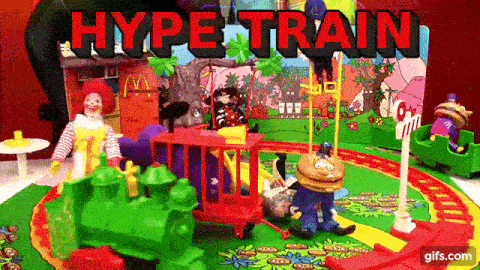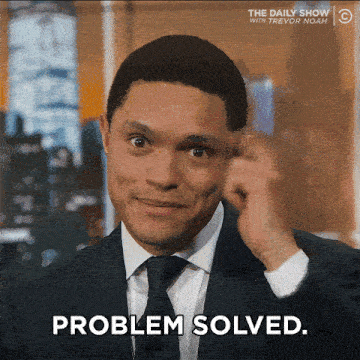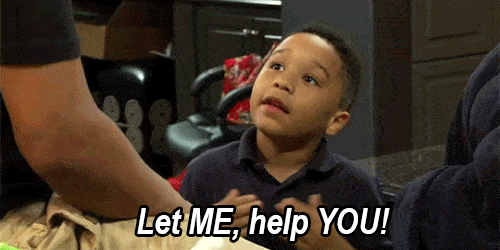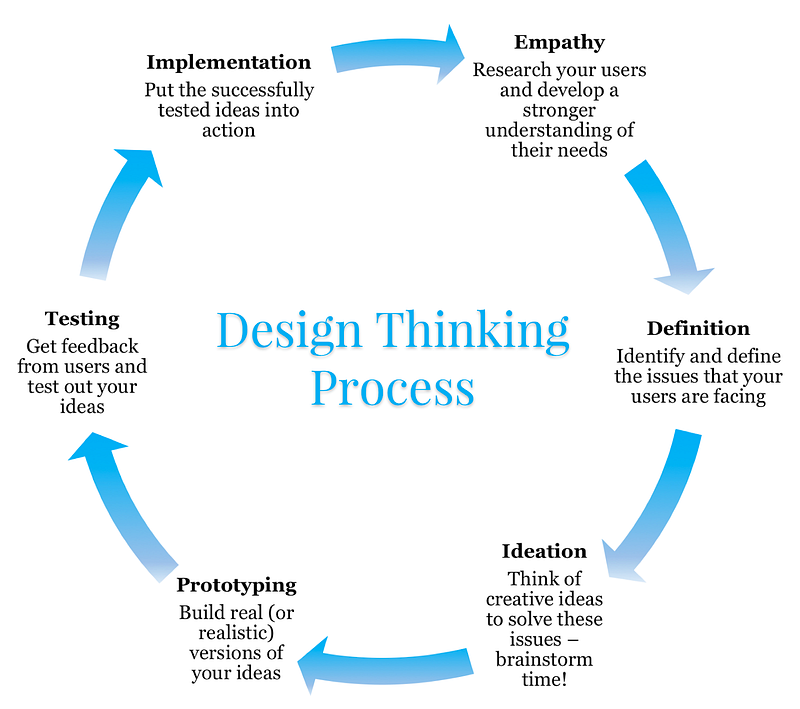Design Thinking 101: what SaaS companies can learn from design sprints
There’s been a lot of hype in the tech world around design thinking.

Pero, ¿qué es el pensamiento de diseño? ¿Y qué podemos aprender de él?
Mejor aún, ¿cómo pueden utilizarlo y aplicarlo las empresas de SaaS?
Let’s get started! 👇
¿Qué es exactamente el pensamiento de diseño?
En pocas palabras, el pensamiento de diseño es un enfoque iterativo y flexible que se centra en comprender mejor a los usuarios a través del diseño y la colaboración.
It’s all about putting forward ideas that emphasize how your users think and behave.
Design thinking allows your team to explore real issues that real users want to solve. 🙌
Y puede hacerlo a través de series de iteraciones y prototipos que, en última instancia, aporten actualizaciones a su(s) producto(s) que hagan felices a sus clientes.

Este proceso también permite a su empresa encontrar soluciones o estrategias alternativas que quizá no hubieran salido inicialmente del diseño original.
Como ya te habrás dado cuenta, el pensamiento de diseño gira en torno a los usuarios, o clientes, de un producto. Se construye teniendo en cuenta la empatía.
Because, after all, some of the best products out there today are also some of the most human-centric products as well. 👫
Since it’s a collaborative process and is intended to be iterative, there is quite a bit of brainstorming, prototyping and testing involved.
What is the design thinking process?
With all of these different aspects of design thinking, it’s easy to get confused or get a little lost. 🙇
Pero definitivamente tenga en cuenta que hay varias maneras diferentes de etiquetar este proceso, y muchos recursos tendrán diferentes nombres para estos pasos, pero la ejecución de cada paso sigue intacta.
El proceso puede dividirse en tres fases generales: Comprender, Explorar y Materializar.
So let’s break it down step by step.
Understanding the user
Empatía
First thing’s first: you need to better understand your users.
Empathy is a major part of design thinking — because it’s the key to thinking of human-centric solutions. 💛
Investigue, observe e incluso entreviste a sus usuarios. Póngase en su lugar.
Try to figure out what they want or some of the problems they’re trying to solve in their daily lives, what motivates them and how they experience your company — then try to figure out cómo su empresa les facilita la vida.

It’s important to put your own assumptions and biases aside and really try to gain insights into how your users think and feel.
And while the amount of time you should spend on this step greatly depends on your own time constraints, do your best to gather as much information possible before moving to the next step. ➡
Los sprints en el pensamiento de diseño son mejores si duran alrededor de una semana en total, aunque algunas empresas prefieren sprints de dos semanas.
Cuanta más información recopile, mejor podrá comprender a sus usuarios y sus necesidades.
Definición
A partir de toda la información recopilada en el primer paso, puede empezar a identificar y definir los problemas que desea resolver para sus usuarios.
Analyze and then synthesize these findings in order to get to the core of what your users want — this usually comes in the form of a human-centric problem statement.
These problem statements combine three elements — user, need, insight — and turn them into addressable questions to tackle. 🤔
Ejemplos de enunciados de problemas:
- ¿Cómo podemos ayudar a los usuarios a incorporarse más rápidamente?
- ¿Cómo podemos mejorar la eficacia de nuestro servicio de atención al cliente?
- ¿Cómo podemos hacer que nuestras guías sean más interesantes?
Estos planteamientos del problema hacen que el proceso de ideación (nuestro siguiente paso) sea mucho más claro.
It also makes it easier to define the how rather than just the why — which helps you get to the heart of users’ needs.
Exploring possibilities for your users
Ideación
Now that you’ve determined the things you want to tackle, this stage is where you start to come up with ideas. 😁
You now better understand your users thanks to the Empathy stage, and you’ve identified what you’d like to solve in the Definition stage, so now it’s time to figure out how you’re going to make it happen.

Hay muchas formas de realizar este paso, ya que existen métodos que van desde la Tormenta de ideas a la Peor idea posible pasando por SCAMPER.
Use what your team prefers, or what you feel will help you find the best solutions. It’s even better if you use a mix of methods during this step.
Gather as many ideas as possible in the beginning, then start to discuss and determine which ones you’d like to try out.
Creación de prototipos
It’s now time to produce examples of your ideas!
Prototyping is the opportunity for your team to create stripped-down, inexpensive versions of the products/features you want to test. 💪
Esto permite a su equipo explorar las soluciones que se les ocurrieron en la fase anterior de una forma más tangible.

Una vez creados, los prototipos pueden probarse dentro del equipo o con otro departamento de la empresa para determinar las mejores soluciones posibles surgidas de las primeras fases del proceso.
At this point, your team can determine whether each idea is accepted, rejected or improved and re-evaluated. ✅
Para pasar a la siguiente fase, el equipo debe tener una idea más clara de las limitaciones y los problemas del producto o la función, a fin de saber cómo se sentirán los usuarios con la versión final.
Materializing your ideas for users
Pruebas
Once the best ideas are determined from the prototyping phase, it’s time to test them!
Recoger las opiniones de los usuarios, monitor any changes in engagement or usage of your product/feature and try to determine how much this change has improved the experience of your users. 😍
It’s entirely possible that you will continue to make improvements as you start to get user feedback — the process is designed so that you can iterate and adapt as needed throughout.
Aplicación
Finally, once you’ve successfully tested your new product/feature, it’s time to officially implement it as a permanent addition to your company.

The things you address for your users during this process can always be revisited if another problem arises. It’s a cycle — so the quest for a better user experience can continue as much as you see fit.
What are we supposed to learn from this?
We’ve touched on the fact that design thinking uses empathy to better understand your users, but it also helps you reinforce the feedback loop.
By empowering your users to give more feedback and try out more new features or products, it makes them feel seen and listened to, and it makes for happier, more satisfied customers in the end. 🤗
How could this apply to SaaS?
Design thinking can be applied to a variety of industries and organizations — including within SaaS companies. 👍
Perhaps you’re feeling stuck on how to make your onboarding process more streamlined?
Or maybe there’s a particular new feature you aren’t sure how to implement?
El pensamiento de diseño puede resolver estos problemas y muchos más.

No sólo permite a su empresa establecer más confianza entre usted y sus usuarios actuales y más credibilidad entre usted y los clientes potenciales, sino que también ayuda a su empresa a pensar un poco más allá.
Once you remove yourself mentally (and emotionally) as an employee and really put yourself in the shoes of the user, you’re able to have a clearer vision of what needs to be improved or created in order to make your users have the best experience possible. 🤟
A veces, la experiencia del usuario puede quedar relegada a un segundo plano a la hora de crear una empresa.
There are so many other things to think about — administration, staffing, building the actual tech around the product, marketing, etc. so it can sometimes lead to a lack of empathy toward your users. 😓
Don’t do that.
Instead, think about the things your users are giving you feedback on (and if you aren’t collecting any type of feedback, get on that right now) and start to think about what you can do to tackle their issues.
Whether it’s offering clear, visual data or a navigation that makes sense, design is a crucial part of a product’s success — so make sure you’re giving them the best possible product, both in terms of tech and in terms of usability.
OK, I want to try this with my company. How do I get started?
There is a vast amount of knowledge and resources on design thinking available online — yes, surprising, I know. 😅
But really the first thing you should do to get started is to discuss with your team that you’d like to try this method and have everyone “buy into” design thinking.
That’s not to say that you’re trying to sell them snake oil or are asking them to join a cult, but it’s important for your team to be in the right mindset when trying to learn from users.
Design thinking sprints can take a lot of creative thinking and requires the ability to have an open mind — so it’s good to at least give them a head’s up about the purpose and process.

Un gran recurso para ayudarte a ti y a tu equipo a aprender más sobre el pensamiento de diseño es Stanford D.School: A Virtual Crash Course in Design Thinking, pero como ya hemos dicho, hay montones de ellos.
If you’re interested in trying design sprints with your team, there’s an excellent Google Ventures page all about design sprints and some resources to help get you started as well.
Happy design thinking! 🤘
Esperamos que te haya gustado este post. Si es así, ¡difúndelo!
Para más información sobre startups, marketing de crecimiento y ventas:
- 22+ Los mejores podcasts de ventas que deberías ver en 2024 - 21 de diciembre de 2023
- Guiones de llamada en frío para seres humanos reales - 21 de septiembre de 2023
- Las más de 25 mejores herramientas de ventas para ayudar a tu equipo a tener éxito - agosto 10, 2023

